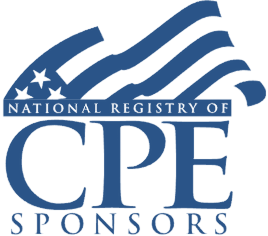- videocam On-Demand Webinar
- signal_cellular_alt Intermediate
- card_travel Tax Preparer
- schedule 110 minutes
Calculating Trust Fiduciary Accounting Income: Interpreting Operating Documents, Applying UPIA and State Law
Reconciling FAI to DNI and Trust Taxable Income, Avoiding Tax and Beneficiary Challenges
Welcome! Save 30% on all CLE, CPE, and Professional Skills webinars, plus 15% off any annual pass with code HOLIDAY25
About the Course
Introduction
This course will provide tax advisers and compliance professionals with a comprehensive guide to navigating the complexities of calculating fiduciary accounting income (FAI) for trusts and estates. The panel will detail how to interpret essential trust and estate provisions to apply to FAI calculations and will identify tax traps, planning considerations in maintaining FAI computations, and deducting excess deductions under Section 642(h)(2) as outlined in the recently issued final regulations. The panel will discuss the fundamentals of FAI calculations using typical real-world examples.
Description
The critical first step to completing a Trust Income Tax Return is the calculation of FAI, also sometimes referred to as trust accounting income (TAI). FAI is the amount generally available to the income beneficiaries of a trust or estate. It is different from both taxable income and distributable net income, both of which are tax-generated concepts. The starting point for calculating FAI is the operating instrument, such as a will or trust agreement. Tax professionals working on trust returns must have a firm grasp of how to apply the documents to an FAI calculation.
Where the operating document is unclear as to an income receipt, an expense item or a distribution item, the FAI calculation defaults to the state law of the trust’s situs. Most states have incorporated the UFIPA, with some local differences. However, fiduciary accounting principles determine the timing and amount of distributions to beneficiaries.
In the “real world”, it’s not unusual that fiduciary accounting principles are misapplied. With trusts established for blended families (i.e. second marriages; remainder beneficiaries are children from prior marriages), misapplying fiduciary accounting principles can result
- in some trust beneficiaries getting shortchanged;
- while other trust beneficiaries getting windfall overpayments; and
- in surcharge actions against the trustee.
Using actual examples, the presentation will illustrate fiduciary accounting blunders made by trustees, their accountants and their lawyers.
Another critical skill is reconciling FAI to both distributable net income and trust taxable income. Accountants and lawyers representing fiduciaries and beneficiaries need to identify the essential differences between fiduciary accounting and tax accounting to avoid both tax consequences and beneficiary challenges. With blended families, the differences can cause turmoil.
Listen as our experienced panel provides an in-depth and practical guide to mastering fiduciary accounting income beyond the basics.
Presented By

Mr. Gadarian's practice focuses on tax strategy, estate planning and asset protection law. Previously, he was a Legislation Attorney on the staff of the Joint Committee on Taxation, U.S. Congress. Before that, he was an Attorney-Advisor to Judge Cynthia H. Hall of the U.S. Tax Court. He is the former Arizona State Chair of the American College of Trust and Estate Council, and is an Adjunct Professor at the University of Arizona College of Law.
Mr. Sanger has over a quarter century of experience in estate planning, trust and estate administration, tax planning and disputes, partnership accountings, and advising clients on establishing, buying, and selling businesses. He is the co-author of Chapter 30, Trustee Accounting Powers, of the Continuing Education of the Bar three volume Will Drafting treatise, addressing many common will and trust fiduciary accounting, principal and income issues confronting fiduciaries and beneficiaries. He is frequently invited to speak on legal topics before attorneys and CPAs. Mr. Sanger has an LLM (Taxation) from the NYU SOL, and is a Certified Tax Specialist (State Bar of California Board Of Legal Specialization).
-
BARBRI is a NASBA CPE sponsor and this 110-minute webinar is accredited for 2.0 CPE credits.
-
BARBRI is an IRS-approved continuing education provider offering certified courses for Enrolled Agents (EA) and Tax Return Preparers (RTRP).
Date + Time
- event
Thursday, November 12, 2020
- schedule
1:00 p.m. ET./10:00 a.m. PT
- Tax definition of FAI/TAI
- UPIA factors in calculating FAI
- Impact of FAI on trust distributions
- Planning considerations and traps to avoid
The panel will discuss these and other important issues:
- How operating documents impact FAI calculations
- Interpreting state laws and UPIA provisions in circumstances where operating documents are silent or inconclusive
- Reconciling FAI to DNI and to trust taxable income
- How FAI determines distribution amounts and timing
Learning Objectives
After completing this course, you will be prepared to:
- Discern the correct use of DNI for a complex trust.
- Recognize the capital gains treatment under IRC 643(b).
- Determine the tax planning opportunities available under the 65-day rule.
- Ascertain the income taxation of estates and trusts under various scenarios.
- Distinguish fiduciary accounting income from distributable net income.
- Identify the tier rules.
- Field of Study: Taxes
- Level of Knowledge: Intermediate
- Advance Preparation: None
- Teaching Method: Seminar/Lecture
- Delivery Method: Group-Internet (via computer)
- Attendance Monitoring Method: Attendance is monitored electronically via a participant's PIN and through a series of attendance verification prompts displayed throughout the program
- Prerequisite:
Three years+ business or tax firm experience at mid-level within the organization, dealing with complex trusts and estates. Specific knowledge and understanding of estate and trust taxation, various types of trusts, distributable net income (DNI), estate and trust distributions, capital gains treatment, fiduciary accounting income (FAI), and allocations between trusts and beneficiaries; familiarity with DNI allocations, tier distributions, and the Uniform Fiduciary Income and Principal Act.

BARBRI, Inc. is registered with the National Association of State Boards of Accountancy (NASBA) as a sponsor of continuing professional education on the National Registry of CPE Sponsors. State boards of Accountancy have final authority on the acceptance of individual courses for CPE Credits. Complaints regarding registered sponsons may be submitted to NASBA through its website: www.nasbaregistry.org.

BARBRI is an IRS-approved continuing education provider offering certified courses for Enrolled Agents (EA) and Tax Return Preparers (RTRP).

BARBRI CE webinars-powered by Barbri-are backed by our 100% unconditional money-back guarantee: If you are not satisfied with any of our products, simply let us know and get a full refund. Contact us at 1-800-926-7926 .
Unlimited access to premium CLE courses:
- Annual access
- Available live and on-demand
- Best for attorneys and legal professionals
Unlimited access to premium CPE courses.:
- Annual access
- Available live and on-demand
- Best for CPAs and tax professionals
Unlimited access to premium CLE, CPE, Professional Skills and Practice-Ready courses.:
- Annual access
- Available live and on-demand
- Best for legal, accounting, and tax professionals
Unlimited access to Professional Skills and Practice-Ready courses:
- Annual access
- Available on-demand
- Best for new attorneys
Related Courses
Recommended Resources

How CPE Can Bridge the Gap Between What You Know and What You Need to Know
- Career Advancement



